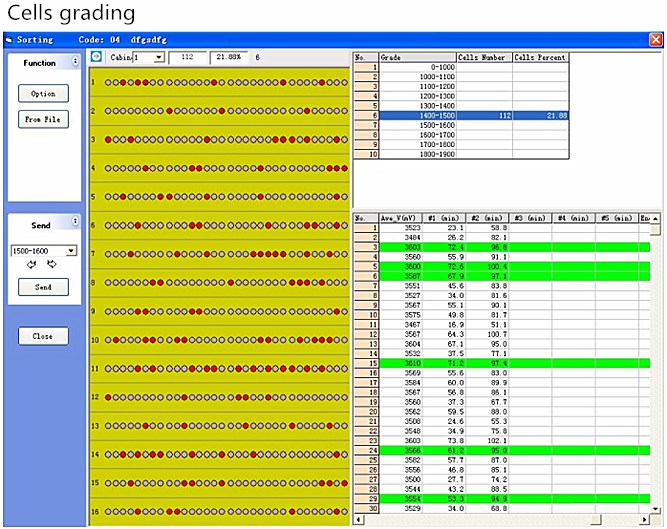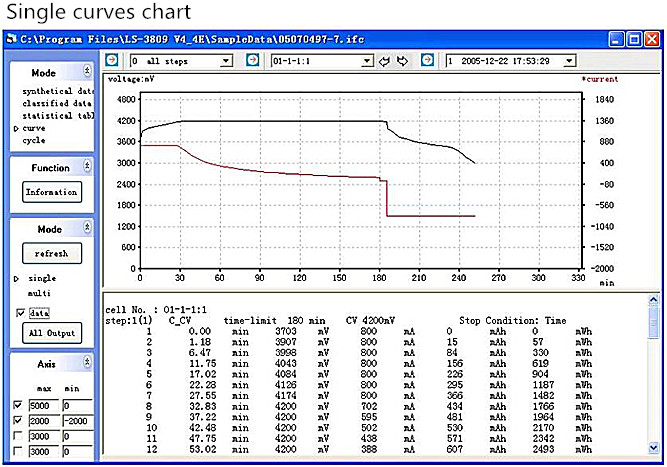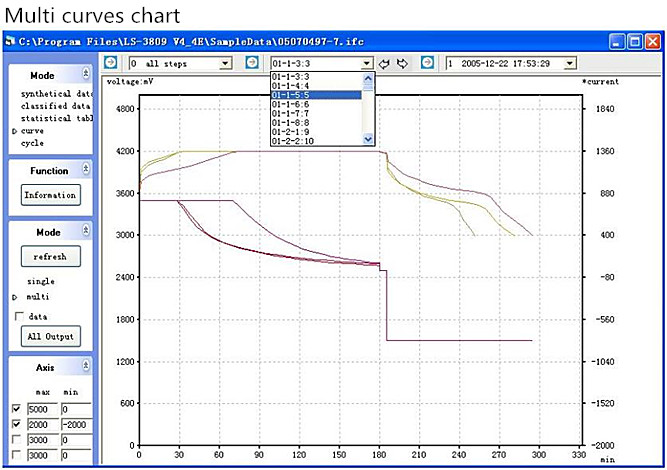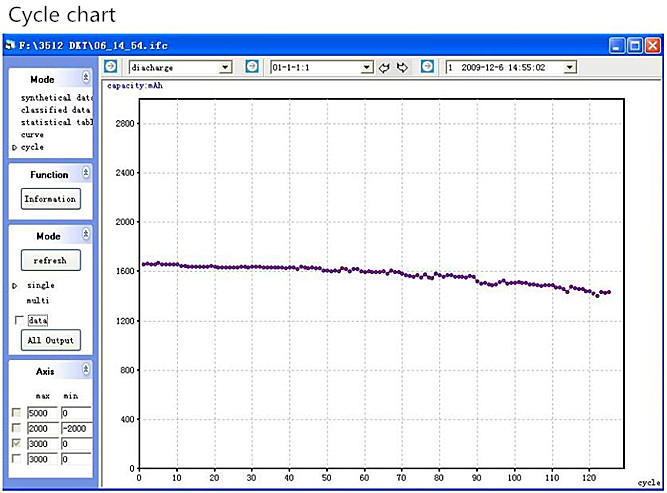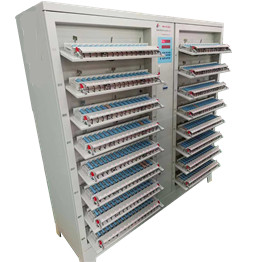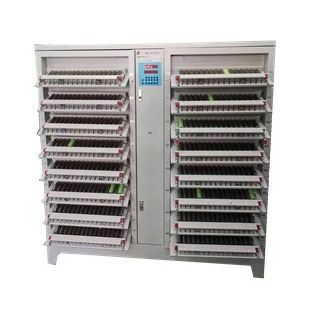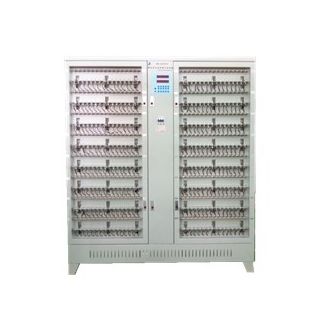PRODUCT
BK-3512E/5 5V5A Cylindrical Cell Charge Discharge & Grading System Manufacturer China
This equipment capable implement 5V5A 18650 21700 26650 lithium battery cell charge discharge testing,capacity and sorting testing,current,voltage testing.Through the battery testing software,save testing datas and output tested analyze report and curve chart.
Equipment with features of energy efficient module,reduce 70% power consumption compare with traditional model,less heat emission,economical and environmental friently.
BK-3512E/5 5V5A Energy Regenerate Lithium Battery Cell Testing & Formation System
Model:BK-3512E/5
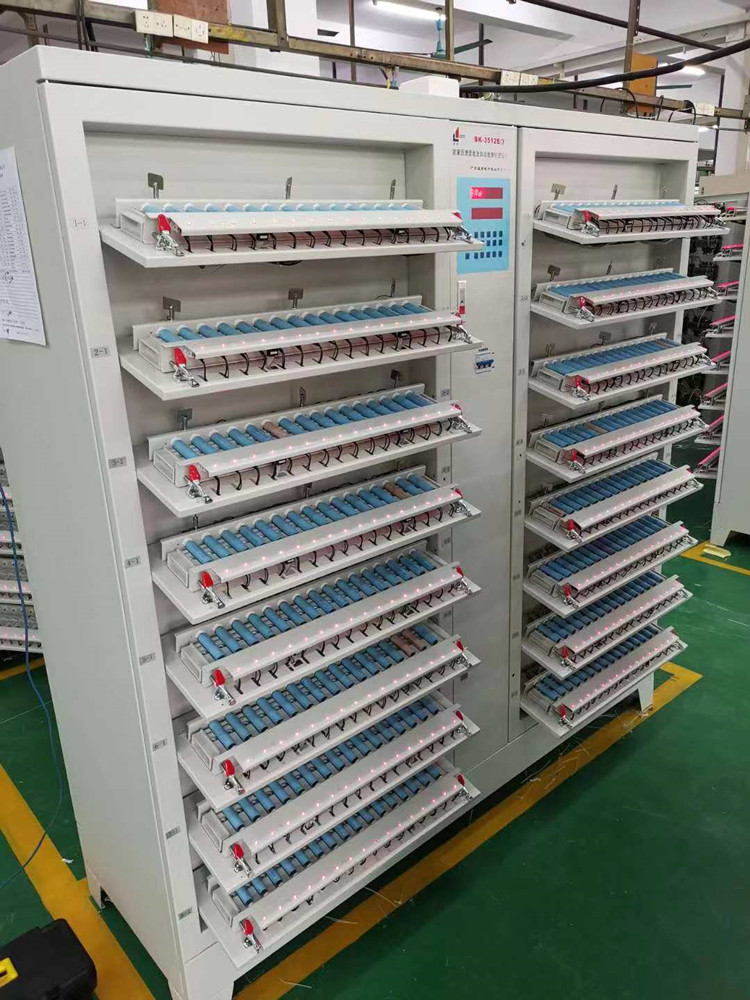
Ⅰ.Structure of equipment
This equipment is mainly composed of a computer, a communication interface and a battery testing cabinet. The battery testing cabinet is composed of a clamper and a board for placing the clampres, a constant current and constant voltage source, a register control circuit, a sampling circuit, a single chip microcomputer and a control panel.
Ⅱ.Main performance of equipment
1.Each device can perform constant current and constant voltage charging and constant current discharge tests on 512 batteries that meet the voltage range.
2.Each channel has a single bidirectional switch constant current source. When charging, the constant current source works in a step-down state, and when discharging, the constant current source works in a boost state, and the discharge energy of the battery is fed back to the grid through the inverter.
3.Using distributed system design, each 8 channels form a subsystem by itself, modular design, easy maintenance.
4.The equipment adopts ARM single-chip computer as the control center and cooperates with the peripheral sampling circuit. It can be controlled by the upper-level computer. When connected to the computer, it can save the complete charge and discharge curves of all channels, or it can be separated from the upper-level computer and operated through the control panel. Constant current and constant voltage charging, constant current discharge test, sorting by time, etc.
5.Current and voltage calibration uses programmable memory to save calibration coefficients, instead of potentiometer adjustment, to avoid fluctuations in voltage and current values caused by changes in potentiometer adjustment contacts, which helps to ensure the accuracy of the equipment.
6.Each battery completely has an independent constant current and constant voltage source, which is self-contained and does not affect each other.
7.The battery adopts manual picking and placing and automatic clamping. Each clamp plate can individually control the opening and clamping state of the polymer clamp, reduce the opening and closing of manual pressing clamps, and improve the efficiency of battery clamping and labor intensity.
8.A light-emitting diode is installed on each battery fixture as a working status display. When the discharge is completed, it can be used to indicate battery capacity sorting.
9.Real-time detection of the voltage of each battery, when charging, first constant current charging, when the battery voltage reaches the set value, it will smoothly switch to constant voltage charging, when the set time or current termination conditions are met, the charging ends. During constant current discharge, when the battery voltage is lower than the set value, the discharge ends and the corresponding battery indicator lights up.
With power-down protection function, it can continue to run after the original work process is connected.
10.Supporting software functions.
A. Graphical operation interface is used to display the battery voltage, current, time, capacity and other data, and the corresponding working status and abnormal conditions are displayed in various colors;
B. Any segment battery capacity indication (up to 100 segments);
C. Various conditions (capacity, time, open circuit voltage, discharge platform, etc.) for battery sorting function;
D. Automatic calculation of constant current charging ratio, capacity loss, discharge efficiency, average voltage, median voltage and other data;
E. Operator authority setting, hierarchical operation;
F. It can display charge and discharge curve diagram and cycle diagram;
Ⅲ.Main technical parameters:
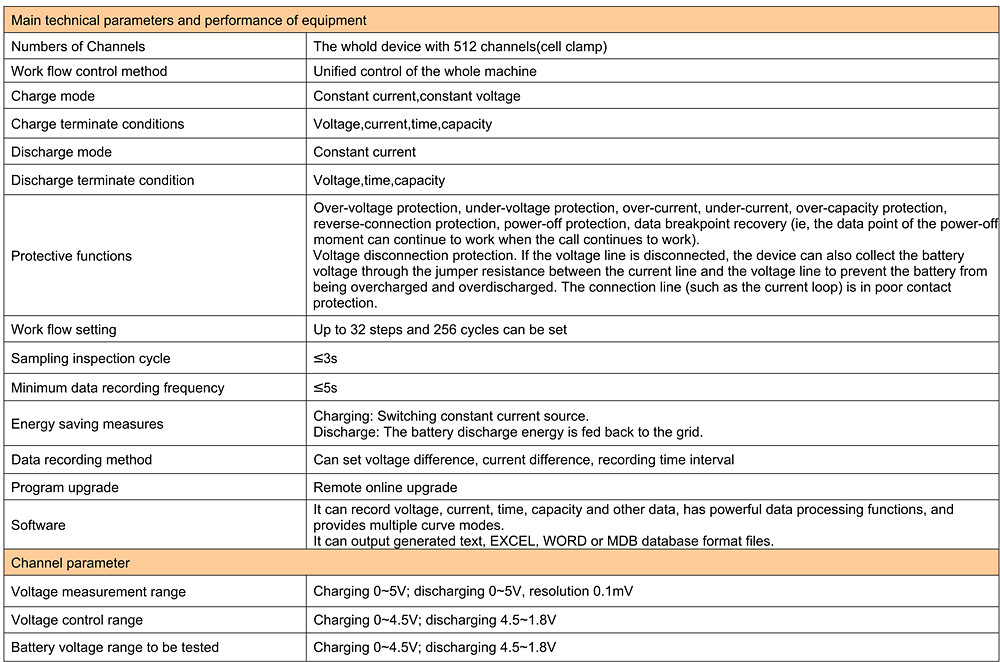
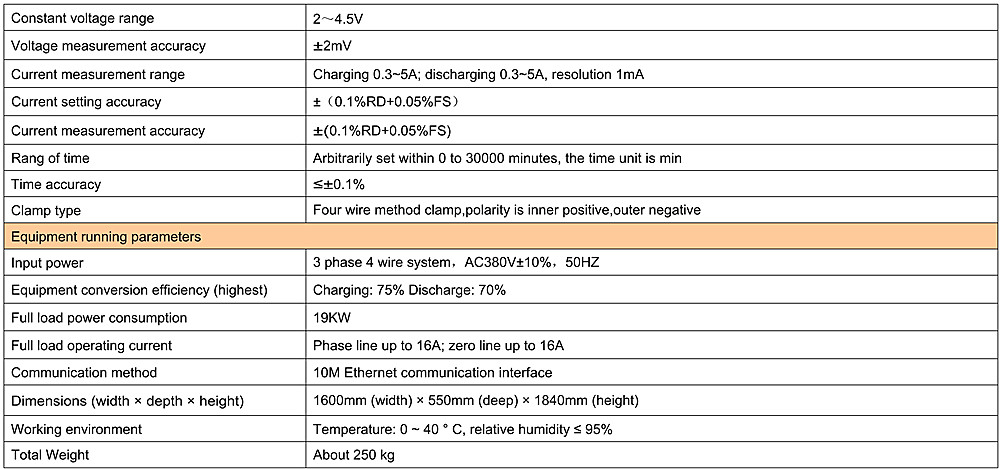
Ⅳ.Energy saving principle block diagram of equipment:
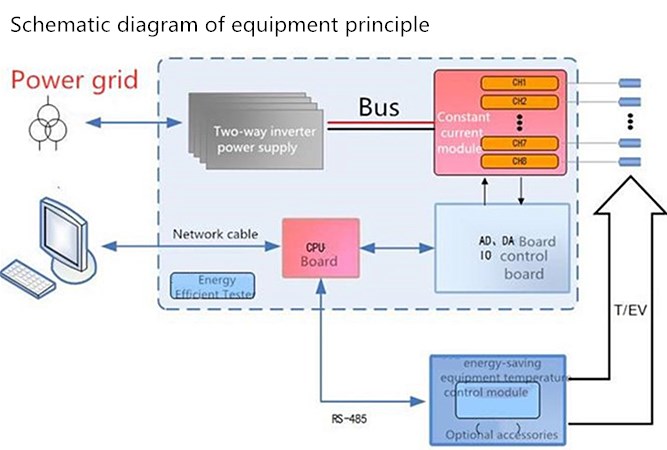

Charge discharge current flow chart
When charging:
A. Charging adopts switching constant current source, which has higher energy conversion efficiency than traditional linear constant current source;
B. Energy flow direction: (power grid + energy generated by discharge equipment) → AC/DC two-way inverter power supply → main board → battery
When discharging:
A. Energy flow direction during discharge: battery→main board→AC/DC bidirectional inverter power supply→battery→(discharging equipment + grid)
B. When discharging, most of the energy will flow to the charging equipment and other energy-consuming equipment (such as air conditioning, lighting, office equipment, etc.) through the AC bus of the factory, and there is still excess energy that will be fed back to the grid.
Ⅴ.Equipment outline drawing:
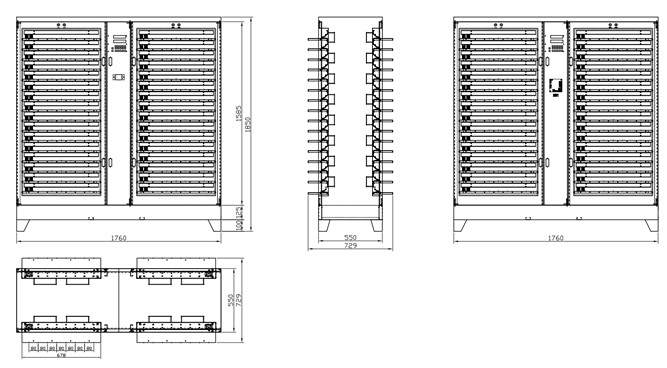
Ⅵ.Battery testing software windows screenshot:

